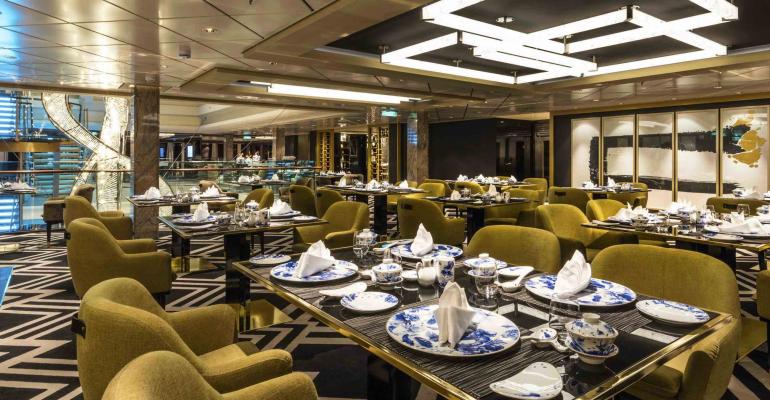Speaking during the 'Design and Interiors Over Land and Sea' conference session at Seatrade Cruise Global, SMC Design director Andy Yuill said: 'Asians do like outdoor spaces but they also want lots of shade where they can move under cover. On Genting Dream, we have many glass doors which can be opened to turn indoors into an outdoor space—but one with shade.
'Also, the spa offering has to be one that Asians are used to. If you go into a typical spa in Shenzhen, it is all about the flow through rather than the offering. There is a step by step progress through the spa whereas, in a Western spa, it is all about the variety of treatments.
'As for the food, you need Asian but combined with the Western food they also want to try in the main restaurant where you should also have an area where the ducks are on display as well as an area for truffles.
'But one of the challenges is that, within the Asian market, there are so many different cultures and you have to design for that, too.'
Artlink ceo Tai Danai Tai agreed: 'It is a little risky to talk about ships for "Asians" as there are so many differences within that grouping. For example, the Chinese tend to travel in three generations—two grandparents, two parents and one child—and this means some language barriers and cultural differences just within that one party.'
Tillberg Design ceo and partner Michal Jackiewicz experienced similar challenges with the design of Norwegian Joy as Norwegian Cruise Line’s first ship customized for the Chinese/Asian market.
'Design is also a selling tool so it is very important to get it right,' he said. 'We took a soft approach, trying to find out what was politically correct. We judged that Asians are familiar with the Western world so we decided to just layer an Asian accent on top of a conventional NCL ship.'
Copyright © 2024. All rights reserved. Seatrade, a trading name of Informa Markets (UK) Limited. Add Seatrade Cruise News to your Google News feed.


